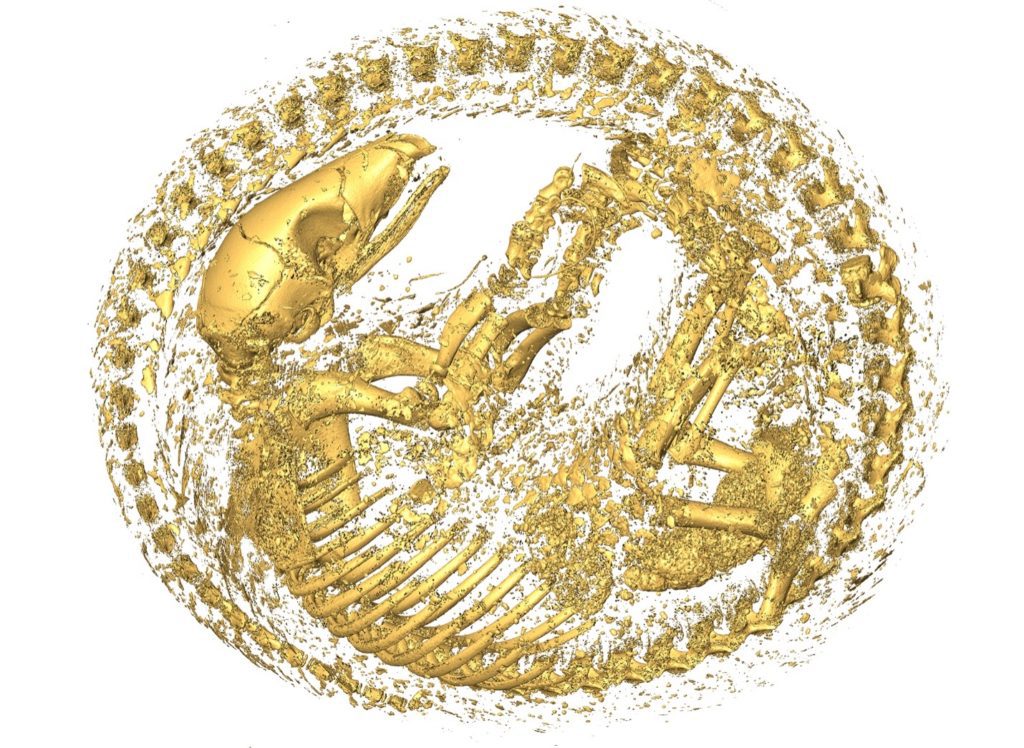by Dr. John Wible
The third Saturday in February is celebrated as World Pangolin Day, a day to raise awareness of this endangered mammal. Pangolins, scaly anteaters, are heavily illegally trafficked for the bogus medicinal powers given to their scales, which are made of keratin, the same material that makes our semi-rigid fingernails.

This image is from a CT scan of a preserved specimen from Cameroon in West Africa of the white-bellied pangolin, Phataginus tricuspis, from the Yale Peabody Museum of Natural History. There are eight species of pangolins, four in Africa and four in Asia. Some are dedicated tree dwellers, like the white-bellied pangolin; some are dedicated ground dwellers; and some are a mixture of the two. The existence of all eight species is threatened by some human actions.
The pose of this specimen is one that all living pangolins can readily replicate, rolling up into a ball as a defensive posture. The word pangolin itself is Malay for “roller.” With no teeth, the creature’s rolling posture and scales are its best defenses. Rolling is made possible in part by the aggregate mobility at the articulations between the individual bones of its backbone or vertebral column. And pangolins have a lot of these bones. The human body has 32 to 35 vertebrae, divided into regions: seven cervical, 12 thoracic, five lumbar, five sacral, and three to five tiny caudal vertebrae making the coccyx. And we know how mobile our bodies are! At 72 vertebrae, the white-bellied pangolin is double our count: seven cervical, 12 thoracic, eight lumbar, two sacral, and a whopping 43 caudal vertebrae. The black-bellied or long-tailed pangolin, Phataginus tetradactyla, has even more bones in its tail at 49!
For more about what you can do, visit WorldPangolinDay.org.
John Wible is the curator of the Section of Mammals at Carnegie Museum of Natural History. Museum employees are encouraged to blog about their unique experiences and knowledge gained from working at the museum.
Related Content
Carnegie Museum of Natural History Blog Citation Information
Blog author: Wible, JohnPublication date: February 18, 2022
